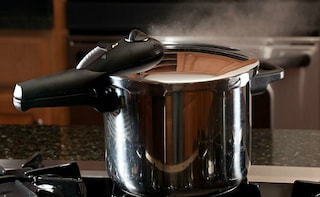Remember the heavy metal pot of the 90's, rattling on the stove, poking your paranoia and waiting to explode? And the times when you walked into the kitchen and saw the night's dal dripping from the ceiling, and you mother cleaning it off, one tile after another. Aren't we glad those days are a thing of the past? But we hope your cooker isn't.Savvy ovens, efficient microwaves and compact grills may have been introduced to your fully equipped kitchen, but so have new and improved versions of our favourite culinary relics.
Advertisement
Advertisement
Advertisement
Advertisement
For the latest food news, health tips and recipes, like us on Facebook or follow us on Twitter and YouTube.
Advertisement
Tags:
